China’s Trade and Development with BRICS: Analysis and Opportunities
With the BRICS 2023 summit now underway, we examine the China-BRICS trade dynamics
The BRICS 2023 summit is now underway in Johannesburg, South Africa, with the Heads of State of Brazil, China, India, and South Africa all attending in person, together with significant trade delegations. The Russian President, Vladimir Putin, is attending by video-conference. The BRICS summit is expected to be a key moment in plans that could ultimately challenge the G7 group of nations in global economic and geopolitical influence. In this article I discuss the current position as concerns China – BRICS trade.
Background
The first meeting of RIC (Russia, India, and China) was held in 2005 in St. Petersburg. Brazil and South Africa joined the group in February 2011, when the current version of BRICS was completed. However, BRICS is not a formal alliance, and there are differences among members, but over the past decade, with dozens of meetings and summits, it has pursued common interests in strengthening mechanisms.
BRICS countries as a total currently include about 26% of the total global land mass, and about 42% of the world’s population. This basic clout means that BRICS combined efforts in restructuring the global economy and strengthening economic and financial cooperation have been welcomed by many countries – and been viewed with suspicion elsewhere.
Mutual Economic Cooperation
The BRICS have also provided alternatives to existing global mechanisms deemed to be heavily influenced by the collective West and their policies. The BRICS New Development Bank (NDB), established as a partial alternative to the World Bank, has approved over 90 projects worth US$32 billion to support members’ infrastructure.
Economic cooperation was also discussed at the 14th BRICS summit in June 2022. Paying attention to providing a better interfacing in handling global crises, forming a multipolar economic strategy, developing alternative commercial and financial routes, promoting economic recovery, diversifying the economy, minimizing costs, developing electronic commerce, integrating markets, and cooperating with other nations have made BRICS attractive to smaller and other emerging countries.
Practically, BRICS is seen as a union of strong emerging powers with a common currency reserve of about US4 trillion, which has already undertaken achievements in standing against unilateralism and can be useful when positioned as alternatives to Western controlled institutions such as the World Bank, the International Monetary Fund, and Western financial and trade policies in general.
BRICS 2023
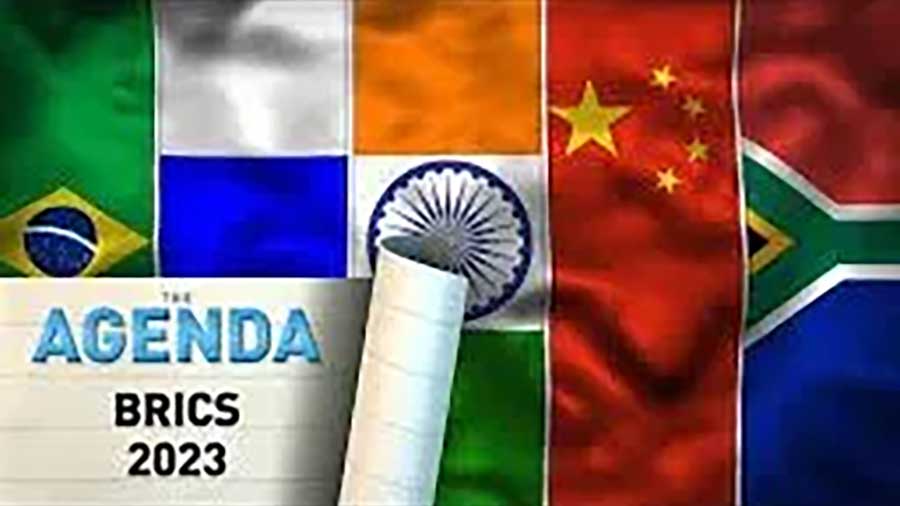
2023 is an important turning point in the BRICS development and its future global role.
BRICS combined efforts are seen in cooperation and collaboration in developing alternative payment systems to SWIFT, the gradual development of a non-dollar financial system, the development of a common payment system (BRICS Pay), the increase of trade using respective domestic currencies, and creating a common currency. These are all progressing at different timescales, however the use of respective digital currencies in the settlement of future intra-BRICS trade will be a significant move. Russia, China, and India are all poised to launch their digital currencies for common usage by early 2025. This will allow trade to be conducted between them without the global SWIFT network and to reduce threats of the same upon other countries. Brazil and South Africa are close behind. In comparison, the United States and European Union, with rather more complex financial markets, have only recently agreed their digital currency protocols – a technical step the majority of BRICS members completed three years ago.
Strengthening the role of the New Development Bank (NDB) will help achieve BRICS national interests. The West’s approach to isolate Russia has created more incentives within the BRICS to increase trade with domestic currencies or create a common currency. The former has happened and is increasing; the latter will take time. Four to five new members of the NDB are expected; which could include Saudi Arabia and the UAE, which would give the NDB access to the Middle East region. Indonesia is a likely candidate from ASEAN, while Kazakhstan would give a Central Asian base. Argentina needs an alternative to non-Western financial support and would be another key asset in Latin America; and has been promised a succession vote at the current summit. Algeria and Thailand are also both potential candidates.
BRICS Expansion
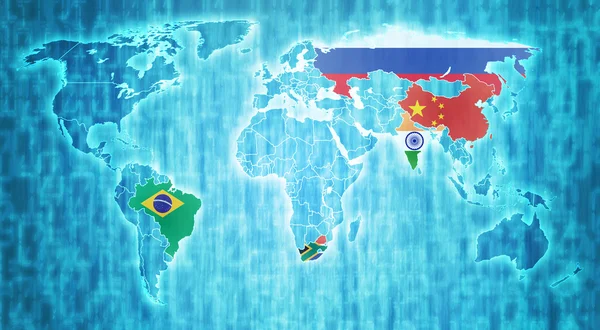
Incentives for official participation in BRICS have increased in 2023. Although “BRICS Plus” was created in 2017 and invited non-BRICS officials, over the last two years, China has supported the concept of expanding cooperation within the ‘BRICS Plus.’ Model. Moscow has also mentioned the potential expansion of BRICS members from 5 to 17 nations. About 40 additional countries are believed to have expressed interest in joining and include heavy hitters such as Argentina, Egypt, Indonesia, Iran, Nigeria, Saudi Arabia, Turkiye, and the UAE.
In the meantime, in addition to reviewing the collective decision of the organization and having the necessary conditions and procedures for the process of accepting new members, the structure of BRICS and the process of accepting new countries may change with the joining of more countries.
China In BRICS
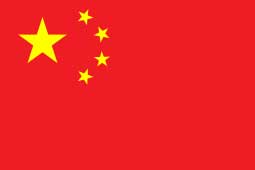
China – Intra-BRICS Trade
China’s economy has returned to a sustainable recovery path after COVID-19. Despite ups and downs, foreign trade and investment has continued to grow, and foreign trade was stable during 2022. However, China’s economy is vulnerable to real estate challenges, climate change, tightening global financial conditions, and rising geopolitical tensions.
China’s economic indicators for the first half of 2023 however indicate a steady post-COVID recovery. China’s GDP experienced a healthy growth rate of 5.5% year-on-year in H1 2023, while total GDP reached about US$8.3 trillion. In the second quarter of this year, GDP grew by 6.3% year-on-year.
The per capita disposable income in the first half of 2023 stood at US$2,739, while foreign trade reached US$1.36 trillion in Q1 and grew by almost 6% quarter-on-quarter in Q2.
Various measures to strengthen the economy in 2023 focused on the priority of stimulating economic growth, expanding domestic demand and consumption, improving the flexibility of supply chains, attracting more foreign investment, and reducing unemployment.
China’s foreign trade with other BRICS countries has grown, and China’s foreign trade with other BRICS countries increased by 12.1% in the first five months of 2022 compared to 2021.
Mechanical and electrical products are one of the main export products of China’s exports to other BRICS economies, energy, agriculture, and mining products accounting for about 76.3% of the total value of China’s imports from the BRICS nations.
Signing free trade agreements, establishing common standards for products, optimizing business methods, and removing barriers to market entry is also effectively increasing the trade volume of the five BRICS nations. Trade between China and other BRICS countries is highly complementary and is expected to maintain growth. That said, the superiority of China in terms of dominating BRICS trade is undeniable.
China-Russia

The volume of mutual trade between China and Russia has increased and reached US$190 billion in 2022. The trade volume between Russia and China in the first six months of 2023 has continued this expansion and has also grown by 20% compared to the same period last year. Russia is China’s main source of coal, crude oil, and gas imports. Since the beginning of this year, there has been an upward trend in energy exports to China, and the scope of agricultural trade and agricultural products is also expanding. Exports from Russia to China increased by 84% in the first five months of 2023.
Prognosis: A rapidly growing and evolving trade partnership, which will accelerate more given increasing use of mutual digital currencies, improving Eurasian connectivity, and a mutual, well-defined desire to break the perceived hegemony of Western managed international trade structures to a more inclusive multilateral platform.
China-India

Bilateral trade between India and China touched an all-time high of US$135.98 billion in 2022, while New Delhi’s trade deficit with Beijing crossed the US$100 billion mark for the first time. Despite frosty political relations, bilateral trade is currently steady. The main products that China exported are computers, smart phones, and semiconductors, while India exported iron ore, refined petroleum, and raw aluminium.
Prognosis: Currently stable and showing signs of growth; but remains vulnerable due to political rivalry and disputed territorial security issues. If these can be resolved – and both leaders expressed exactly this desire during August 2023 – trade development could become dynamic if infrastructure connectivity can be improved.
China-Brazil

According to data from the China General Administration of Customs, in 2022, bilateral trade between China and Brazil reached US$165.6 billion, an increase of 8.1% year-on-year. In April this year, the two countries signed multiple trade agreements to boost this further, resulting in bilateral trade reaching US$13.85 billion in June 2023, suggesting that trade levels are stable and have slightly increased, although this may also improve by the year end.
The main products that Brazil exports to China are iron ore, soybeans, and crude petroleum, while China exported semiconductors, office machines, and smart phones. The agreements signed in April will increase collaboration on a range of issues, from aerospace development to infrastructure investment.
Prognosis: Significant planned developments and investments, and mutually compatible trade commodities imply that China-Brazil trade can be expected to show healthy development.
China-South Africa
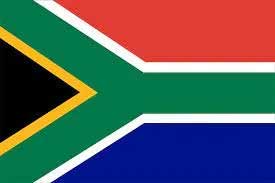
South Africa is China’s largest trading partner in Africa, with bilateral trade of US$56.74 billion in 2022. That was an increase of 11% over the previous year, thanks in part to rising commodity prices. 2023 trade levels thus far have shown sustainability and smaller growth. The main products that China exports to South Africa are broadcasting equipment, computers, and coated flat-rolled iron. The main products that South Africa exports to China are gold, diamonds, and iron ore.
Prognosis: South Africa will never be a huge bilateral trade partner for China, however mutually diverse trade is developing and looks sustainable. South Africa’s position as a gateway to Africa can help the PRC establish east coast links and connectivity via the Middle East to the INSTC and trade other BRI trade routes. South Africa may be the smallest BRICS member, but it remains an important geographical player.
China Plus
China is a member of the Regional Comprehensive Economic Partnership (RCEP), a free trade agreement that also includes Australia, Brunei, Cambodia, Indonesia, Japan, South Korea, Laos, Malaysia, Myanmar, New Zealand, the Philippines, Singapore, Thailand, and Vietnam.
China and other RCEP members increased their trade by 7.5% year on year to US$1.82 trillion in 2022. International businesses with operations in China can access the RCEP markets under certain rules of origin conditions.
Overall, ASEAN remains China’s largest trade partner. In the first half of 2023, trade with ASEAN countries accounted for 15.3% of China’s total trade, reaching US$428.96 billion, up 5.4% from 2022. China has a FTA with ASEAN.
The BRICS Vision Ahead
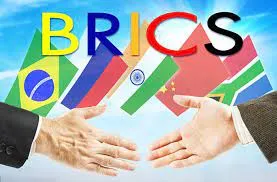
BRICS is facing many challenges, such as internal differences, global economic growth slowdown, geopolitical tensions, coordination problems, disagreements and different priorities of members, along with external pressures.
Economic cooperation within BRICS is still limited, and its cohesion is not especially strong, meaning we can expect an increase in institutionalising the various BRICS initiatives during this summit. There are also likely to discussions concerning BRICS trade liberalization and reducing each other’s import tariffs.
Although BRICS is not an official alliance, broad common interests such as moving towards a multipolar global governance system have brought greater opportunities with huge potential. In this way, it represents a huge consumer market, having a large middle class, natural resources, good communication and networks, a sound legal system, and modern infrastructure.
The existing BRICS 2025 strategy, which was implemented in 2020 and will soon be due for renewal, has been useful in developing trade and mutual investment between BRICS countries, strengthening customs cooperation, inclusive growth, and diversifying cooperation into different sectors.
Related Bloc Relationships
Should institutional connections between BRICS and regional unions such as the EAEU, Mercosur, and the SACU be established, the multilateral trading system will be strengthened. Technologies, especially in digital currencies and trade facilitation are also more likely to be shared, giving the BRICS – and its allies – a far greater trade platform to base themselves on. This is crucially outside the Western based system of management – SWIFT, sanctions, and overly influential policy banking.
This may also involve the Shanghai Cooperation Organisation (SCO) with discussions already taking place about merging; or increasing trade development ties between the two. The SCO is essentially a security bloc but does have a trade remit. It would also bring into the BRICS orbit the SCO members, who include BRICS members China, India, and Russia, in addition to full members Kazakhstan, Kyrgyzstan, Pakistan, Tajikistan and Uzbekistan. There are also four Observer States interested in acceding to full membership in Afghanistan, Belarus, Iran, and Mongolia, and six Dialogue Partners being Armenia, Azerbaijan, Cambodia, Nepal, Sri Lanka and Turkiye. In 2021, the decision was made to start the accession process of Iran to the SCO as a full member, while Egypt, Qatar as well as Saudi Arabia became dialogue partners.
With each of the BRICS members regional heavyweights in their own backyards, the development of BRICS into the major global economic and trade powerhouse has every potential of manifesting itself.
It should also be said that the opportunities of joining BRICS are more than the challenges. The joining of new members to BRICS can have various consequences, even competing with the G20.
In practical terms, the total percentage of the GDP of the current BRICS member countries is 31.5% of global GDP. That is more than the G7 bloc with 30.7% of global GDP, with the BRICS share almost certain to continue outstripping its Western equivalent as there are many potentials for using BRICS+ formats, with the participation of SCO, MERCOSUR, ASEAN, AfCFTA, SAARC, and so on in creating additional economic cooperation.
Chris Devonshire-Ellis is the Chairman of Dezan Shira & Associates. He may be reached at asia@dezshira.com
Dezan Shira & Associates assist foreign investors, including China clients into Asia and provide market intelligence, business establishment, bank account opening, tax advisory and related services to Chinese businesses in Asia. We have been operational since 1992 and maintain multiple offices throughout India, and have partner firms in Russia, Brazil, and South Africa. For assistance, please contact china@dezshira.com
- Previous Article US Bans New Investments in China’s Sensitive High-Tech Industries
- Next Article China Issues 24 New Measures in Clear Directive to Boost Foreign Investment









